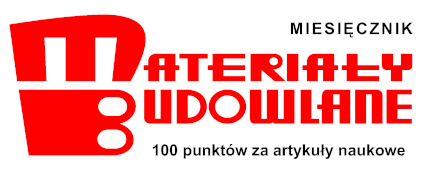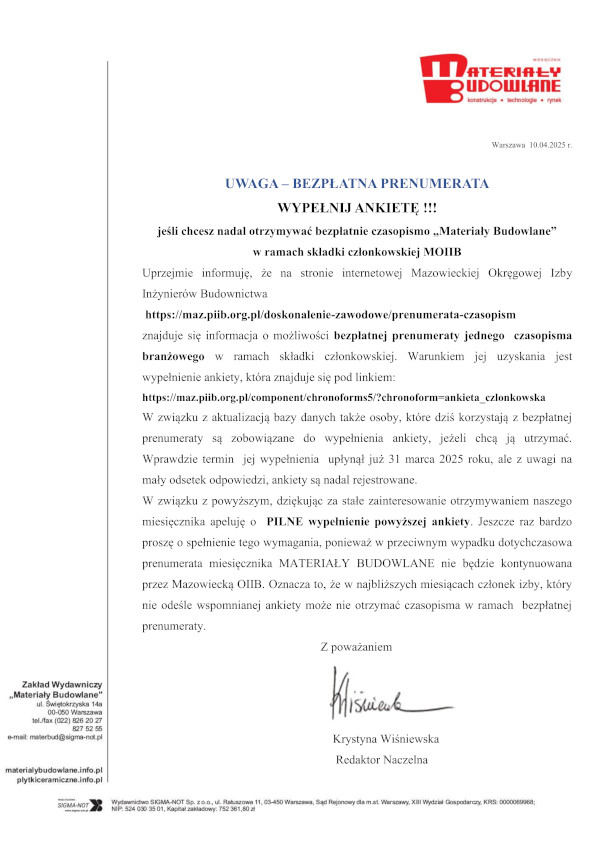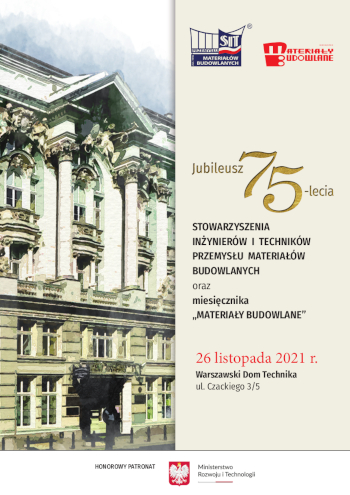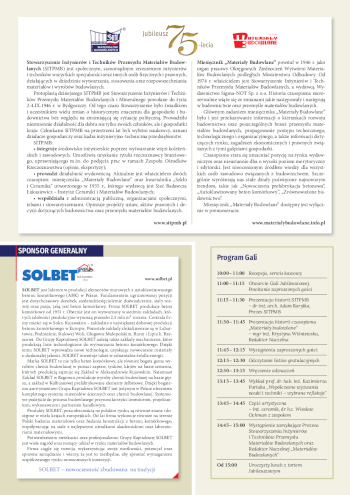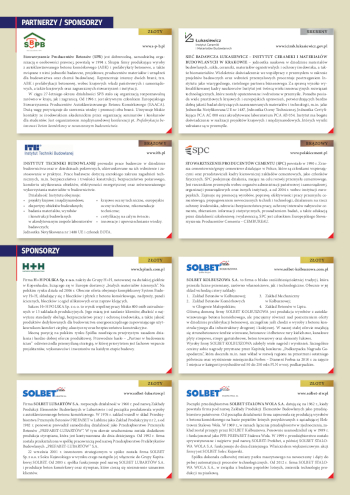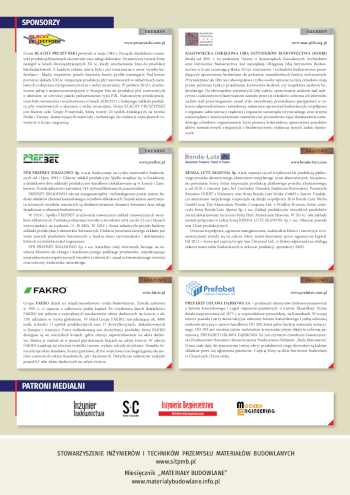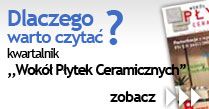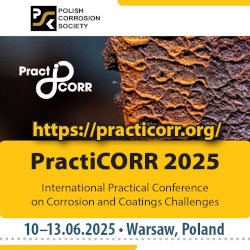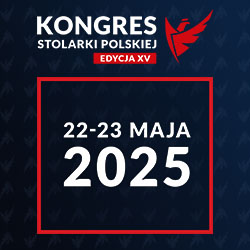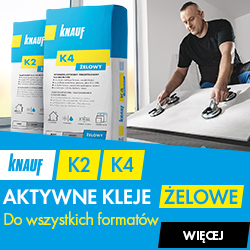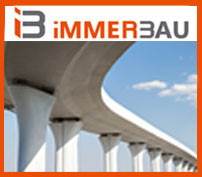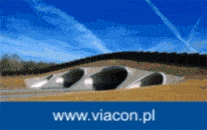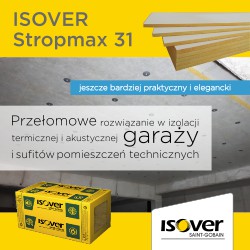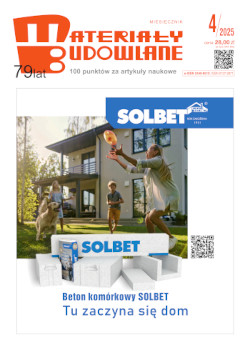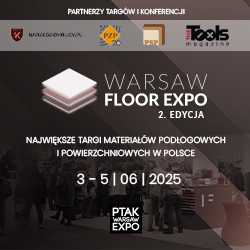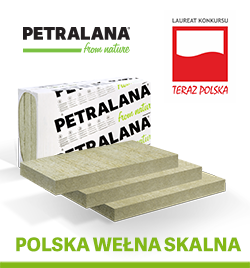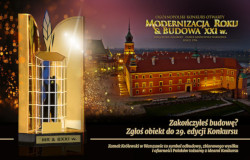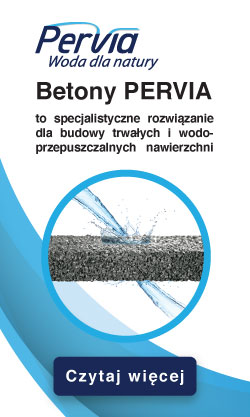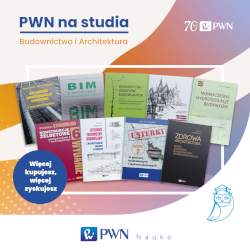Open Access (Artykuł w pliku PDF)
Fire resistance of tensile fire-protected steel elements
dr inż. Piotr Turkowski, Instytut Techniki Budowlanej, Zakład Badań Ogniowych
ORCID: 0000-0002-0020-0091
Adres do korespondencji: Ten adres pocztowy jest chroniony przed spamowaniem. Aby go zobaczyć, konieczne jest włączenie w przeglądarce obsługi JavaScript.
DOI: 10.15199/33.2022.11.59
Oryginalny artykuł naukowy
Streszczenie. W artykule zaprezentowano wyniki badania odporności ogniowej stalowego kształtownika o profilu IPE przy działaniu siły rozciągającej i podobnego elementu nieobciążonego. Elementy zabezpieczono ogniochronnie farbą pęczniejącą. W trakcie badania prowadzono pomiar temperatury obu elementów stalowych i wydłużenia elementu obciążonego. Wpływ obciążenia ustalono na podstawie czasu osiągnięcia kolejnych wartości temperatury projektowej, za pomocą tzw. współczynnika korekcyjnego. Uzyskane wyniki pokazują, że nieskuteczność systemu ogniochronnego, określona na elementach zginanych, jest znacznie większa niż możliwa do osiągnięcia na elementach rozciąganych. W celu określenia, jak duża jest to różnica, konieczne jest przeprowadzenie badań odporności ogniowej. Obliczony spadek skuteczności ogniochronnej wynosił ok. 50%, co wskazuje na konieczność mocniejszych, niż wskazane w niemieckich przepisach, ograniczeń stosowania izolacji na elementach rozciąganych.
Słowa kluczowe: element rozciągany; odporność ogniowa; zabezpieczenie ogniochronne; farby pęczniejące.
Abstract. This study presents the results of fire resistance tests of an IPE steel profile under tensile force, and of a similar unloaded element. The elements were protected against fire with intumescent paint. During the test, the temperature of both steel elements and the elongation of the loaded element were measured. The effects of load were determined based on times to reach specific design temperatures with the use of the socalled "correction factor". The obtained results demonstrate that a direct transfer of results from fire protection system effectiveness tests conducted on bent elements onto tensile ones is impossible. The calculated reduction in fire protection effectiveness was approx. 50%, which points to the need for stricter restrictions on the application of fire protection onto tensile elements than those present in German legislation.
Keywords: tensile element; fire resistance; fire protection; intumescent paints.
Literatura
[1] Kotsovinos K, Rackauskaite E, Deeny S. The role of transfer beams on the global structural fire response of tall steel framed buildings. Fire Saf. J. 2020; https://doi.org/10.1016/j.firesaf. 2020.103172.
[2] Wang W, Kodur V. Tensile test on steels at elevated temperatures, in: Mater. Prop. Steel Fire Cond. 2020; https://doi. org/10.1016/b978-0-12- 813302-6.00003-5.
[3] Franssen JM. Calculation of temperature in fire- -exposed bare steel structures:Comparison between ENV 1993-1-2 and en 1993-1-2, Fire Saf. J. 2006; https://doi.org/10.1016/j.firesaf.2005.11.007.
[4] Sun R, Huang Z, Burgess IW. Progressive collapse analysis of steel structures under fire conditions, Eng. Struct. 2012; https://doi. org/10.1016/j. engstruct. 2011.10.009.
[5] Molkens T, Rossi B. On the Simulation of Real Fire for Post Fire Resistance Evaluation of Steel Structures, Springer US, 2020. https://doi. org/10.1007/s10694-020-01025-6.
[6] Franssen J-M, Kodur V, Zaharia R. Designing Steel Structures for Fire Safety, CRC Press, 2009. https://doi.org/10.1201/9780203875490.
[7] CEN, EN 13381-10:2020. Test methods for determining the contribution to the fire resistance of structural members – Part 10: Applied protection to solid steel bars in tension, (2020).
[8] CEN, ENV 13381-4:2002. Test methods for determining the contribution to the fire resistance of structural members. Applied protection to steel members, (2002).
[9] CEN, EN 13381-4:2013. Testmethods for determining the contribution to the fire resistance of structural members. Applied passive protection products to steel members, (2013).
[10] CEN, EN 13381-8:2013. Test methods for determining the contribution to the fire resistance of structuralmembers.Applied reactive protection to steel members, (2013).
[11] Mesquita L, Piloto P, Roque S, Vaz M. Fire resistance of steel members protected with intumescent coatings, YIC2012 – First ECCOMAS Young Investig. Conf. 2012.
[12] CEN, EN 1993-1-2:2005. Eurocode 3. Design of steel structures. General rules. 2005.
[13] CEN, EN 1993-1-1:2005+A1: 2014. Eurocode 3. Design of steel structures. General rules and rules for buildings. 2014.
[14] Łukomski M, Turkowski P, Roszkowski P, Papis B. Fire Resistance of Unprotected Steel Beams- Comparison between Fire Tests and Calculation Models, Procedia Eng. 2017; 172: 665 – 672. https://doi.org/10.1016/j.proeng. 2017.02.078.
[15] Hothan S, Grundlagen zur Erweiterung des Anwendungsbereiches fur reaktive Brandschutzsysteme auf Stahlbauteilen im nationalen Zulassungsverfahren, DIBtMitteilungen. 2011; 42: 187 – 189. https://doi. org/10.1002/dibt. 201130046.
[16] Hasler D, Hothan S. Numerical and experimental analysis of reactive fire protection systems applied to solid steel rods in tension. J. Struct. Fire Eng. 2015; 6: 275 – 282. https://doi. org/10.1260/2040-2317.6.4.275.
[17] HaslerM, Hasler D, Hothan S, Kruger S. Fire tests of steel tension rod systems with intumescent coating, J. Struct. Fire Eng. 2019; 22 – 32; https://doi. org/10.1108/JSFE-01-2019-0005.
[18] Stopp V, Proschek P. Reaktive Brandschutzsysteme auf Stahlbauteilen mit reiner Zugbeanspruchung, DIBt Mitteilungen. 2011; https://doi. org/10.1002/dibt. 201130045.
[19] Hothan S, Hasler D. Summary of the German national regulations regarding the scope of application of intumescent (reactive) fire protection coatings on steel tension members, (2020).
[20] DIN, German proposal for determining the fire resistance of steel tension bars with fire protection systems based on mechanically loaded fire tests (NA 005-52-02 AA), (2015).
[21] Mroz K, Hager I, Korniejenko K. Material Solutions for Passive Fire Protection of Buildings and Structures and Their Performances Testing, Procedia Eng. 2016; 151: 284 – 291. https://doi. org/10.1016/j.proeng.2016.07.388.
[22] P. Sulik, Bierne zabezpieczenia przeciwpożarowe konstrukcji, Izolacje. 2018; 3: 118 – 122.
[23] Anderson CE, Dziuk J, Mallow WA, Buckmaster J. Intumescent reactionmechanisms. 1985; https://doi.org/10.1177/073490418500300303.
[24] Lucherini A, Torero JL, Maluk C. Effects of substrate thermal conditions on the swelling of thin intumescent coatings, Fire Mater. 2020; 1–14. https://doi.org/10.1002/fam.2840.
[25] deSilva D, Bilotta A, Nigro E. Approach formodelling thermal properties of intumescent coating appliedonsteelmembers. FireSaf. J.2020;116:103200. https://doi.org/10.1016/j.firesaf. 2020.103200.
[26] CEN, EN 1363-1:2020. Fire resistance tests. General requirements. 2020.
Przyjęto do druku: 22.08.2022 r.
Materiały Budowlane 11/2022, strona 206-209 (spis treści >>)
